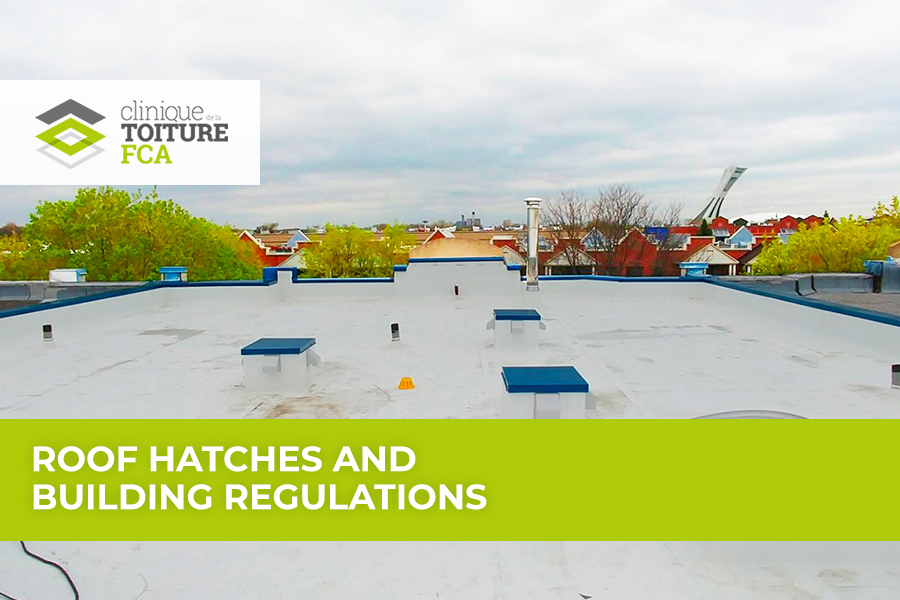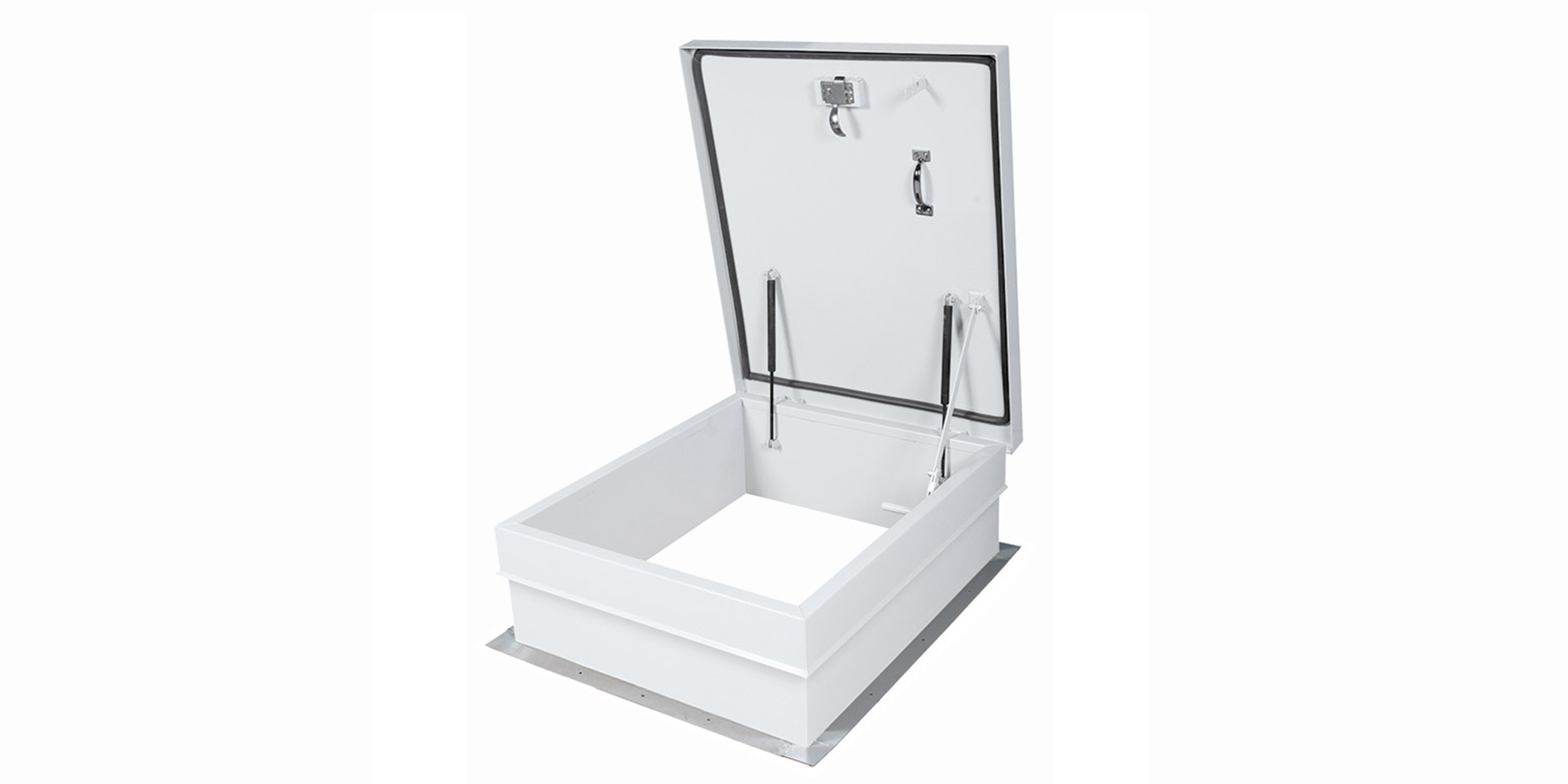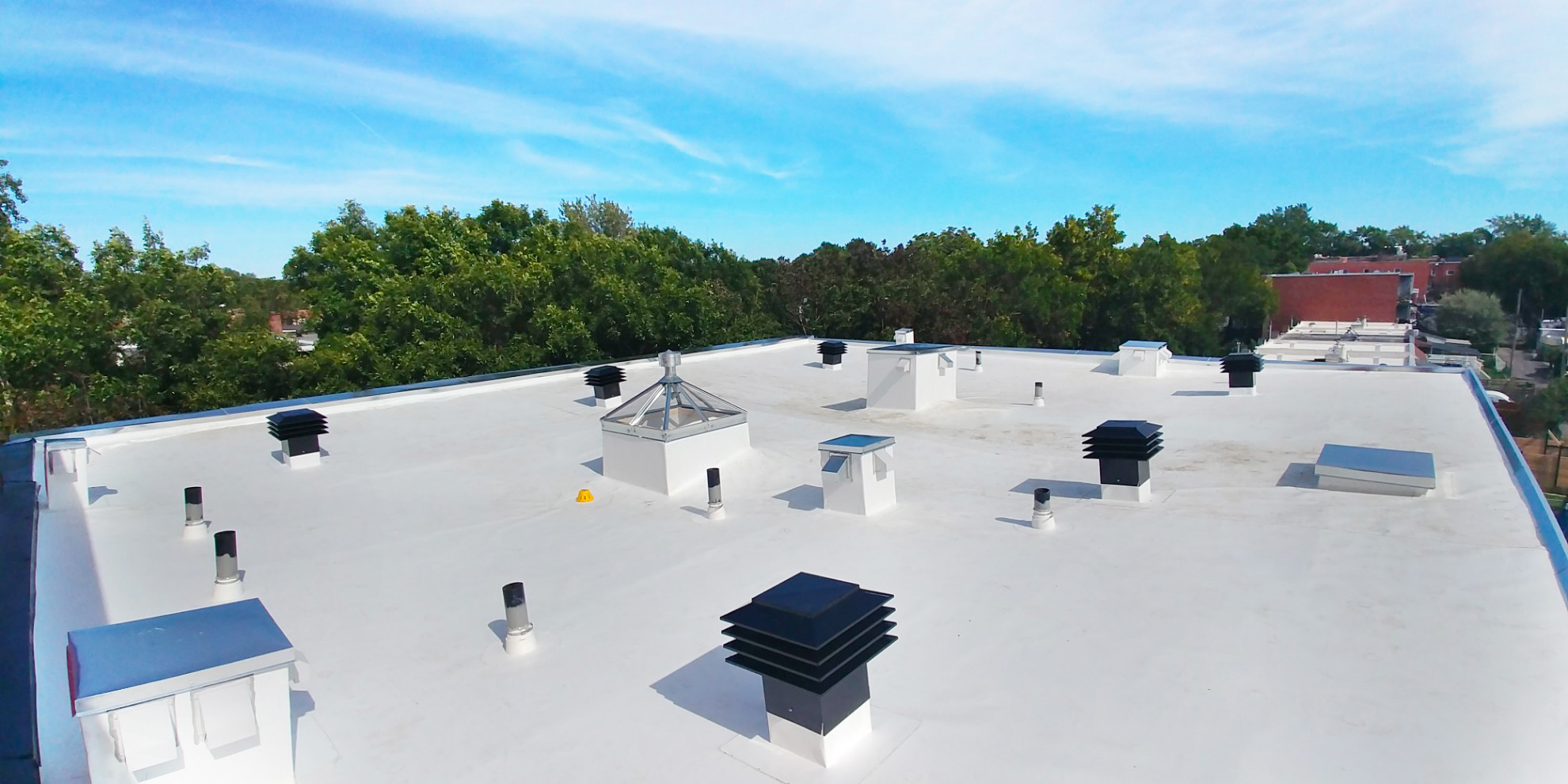
Home > Blog posts > Roof Hatches and Building Regulations
Roof Hatches and Building Regulations
Roof hatches provide roof access in a way that promotes and maximises safety, especially in the case where workers need to access the roof regularly. However, the risk of a fall does not only concern rooftop edges; roof hatches also must comply with certain standards.
We explain the importance of roof hatches and give you the proper tools for a safe and optimal installation.
The Importance of Roof Hatches
Firstly, why should you install a roof hatch? This access hatch in the roof is the safest way to access that part of the building. Without a hatch, people who have to climb onto the rooftop have to do so from the outside, by using a ladder.
Inversely, a roof hatch allows easy access to the roof from the inside, where risks are significantly minimized, especially in the event of bad weather conditions. This helps prevent risks associated with a fall from heights. Take a look at our article to find out more about roof safety.
You can also address two problems at once with a roof hatch: depending on the model, it can also be used to improve air flow and maximise energy efficiency thanks to better air circulation.
Hatches can generally be installed on rooftops with a slope angle that is 30 degrees or less.
Insulation: an Essential Criterion
Although roof hatches can help with your building’s overall air flow, they must also be properly insulated to avoid unwanted air infiltration, while also preventing condensation and frost. This is important for two reasons: to protect your structure and to maintain optimal energy efficiency.

Canadian Standards and Regulations
As we mentioned above, fall hazards not only pertain to roof edges: you will also have to make sure to avoid falls from the roof hatch.
Guardrails around the hatches are now part of the mandatory standards everywhere in Canada.
When you purchase a roof hatch, you will want to pay close attention that it meets all legal requirements. In fact, Canada and the United States have adopted standards and regulations that are slightly different.
When it comes to hatches and guardrails, you will want to refer to the regulations found in the National Building Code of Canada and the Regulations Respecting Occupational Health and Safety. You can also rely on our team, since all of our roof accessories comply with current standards and regulations, and we proceed with the installation with the same discipline.
Finally, do not forget that wearing a harness is highly recommended when you are working on a roof, even if there is a guardrail.
Regulations for Safety and Solidity
Other than a guardrail, other elements allow to ensure a roof hatch’s safety and solidity.
Firstly, you will have to install a protection and support bar, aligned with the stairs or ladder that leads to the roof. People who climb onto the roof will be able to exit more easily and safely.
Moreover, although self-closing doors might represent a safe option, you will also have to ensure that the roof hatch can remain open. This way, you can prevent the hatch from closing on someone and causing an injury.
You also have to make sure that the locking system is reliable enough to prevent the hatch from opening accidentally.
Ideal Dimensions and Placement
When you are choosing a roof hatch, you will also have to take into account the dimensions. When a roof hatch is used for only one accommodation or home, its surface can measure 0.32 m2 or more, as long as all sides measure a minimum of 500 mm.
For any other building, the hatch must measure a minimum of 550 x 990 mm.
Another common question homeowners have is: where should the roof hatch be installed? It can be installed wherever you feel might be the best place for it on your roof, although it is recommended not to install it within 10- feet of the roof edge.
However, it is important to ensure that there is a large enough space for easy entry and exit; this will allow people who use the hatch to be able to enter and exit easily, making it safer for everyone.
When it comes to regulations regarding the positioning of the roof hatch, take note that the door must be installed on the side of the ladder. Is your roof hatch located close to the roof edge? You will have to position the door ‒and thus the ladder- toward the center of the roof.

Recommended Dimensions for an Efficient Roof Hatch
Roof hatches are offered in a wide variety of sizes. Other than the minimum dimensions, what are the recommended sizes? Here are the recommended dimensions according to the type of access:
- Access with a ladder: 36 x 30 inches
- Access via boat style stairs: 30 x 54 inches
- Access via service stairs: 30 x 96 inches
These dimensions will help ensure easy and efficient entry and exit. This will also help maintenance personnel to carry larger tools through the hatch and onto the roof.
Recommended Materials
When choosing the right materials, hatches must comply with certain standards in order to ensure maximum safety:
- Good resistance to heavy loads (like snow, for example)
- Compliance with standards and regulations
- Resistance to wear and weather conditions
- Resistance to fire and explosions
Roof hatches are made from different materials, mainly steel or galvanized steel, stainless steel, aluminum and copper.
Aluminum is often preferred, for several reasons. On the one hand, this material is light, which makes the hatch easier to open and close. The fact that it is light also helps prevent an unnecessary heavy weight on your roof. On the other hand, it is resistant and durable, making it an optimal choice.
Galvanized steel and stainless steel are also high-quality options, which combine both resistance and durability. Stainless steel is the most durable of the two, but it is also more expensive.

Locking Mechanism Options that Comply with Regulations
Before finalizing your purchase, make sure that your roof hatch comes with a locking mechanism that prevents any unauthorized access. Most models that are available on the market come with interior and exterior locks; make sure that they are easy to use for those who are authorized to do so.
Locks and latches can also be linked to the alarm system and include a switch.
The Importance of Maintenance to Guarantee Durability
Just like for any other element found on your roof or that is part of your roofing, the hatch will be exposed to the elements and can sustain small damages with time. Bi-annual inspections ‒during spring and autumn- will allow you to ensure that it is airtight and that materials are still in good condition.
Trust in La Clinique de la toiture for your Roof Hatch Installation
If you want to ensure that your roof hatch is installed in compliance with standards and regulations and that it is properly maintained, trust in La Clinique de la toiture FCA. Our team of professionals will provide you with impeccable and customized service.
A roof hatch is the safest way to access your roof ‒that is, as long as it complies with standards and regulations. Contact us for your installation!

Need help?
Leave us your email address and we will contact you as soon as possible to assess your needs!
Put an end to your water infiltration your clogged drains your roof problems
Leave us your email address and we will contact you as soon as possible to assess your needs!
